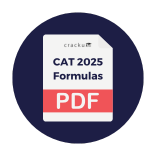CAT Quant Syllabus 2026: The Quantitative Aptitude section of CAT 2026 tests your mathematical skills, problem-solving ability, and numerical accuracy. Most of the questions are based on high school-level concepts, but with a tricky and application-based approach. A clear understanding of the CAT exam syllabus helps you focus your preparation effectively. Read the blog to have better clarity of the syllabus and also understand how to prepare for the Quant section of CAT.
CAT Quant Syllabus 2026
The Quant section of CAT 2026 focuses on testing your basic mathematical concepts and their practical application. It covers topics from arithmetic, algebra, geometry, and number systems, typically up to Class 10 level. Knowing the full syllabus helps in planning a structured and targeted preparation strategy.
CAT Arithmetic Syllabus
Sub-Topic | Concepts Covered |
Ratio & Proportion | Simple, Compound, Continued Ratio |
Percentage | Successive Percentage Changes, Profit & Loss, Discounts |
Average | Weighted Average, Combined Average |
Time & Work | Work Efficiency, Pipes and Cisterns |
Time, Speed & Distance | Relative Speed, Trains, Boats and Streams |
Simple & Compound Interest | Installments, Effective Rate |
Mixtures & Allegations | Mixture of 2 and 3 solutions |
CAT Algebra Syllabus
Sub-Topic | Description / Concepts Covered |
Linear Equations | Single and Multi-variable equations |
Quadratic Equations | Roots, Nature of Roots, Formation of Equation |
Polynomials | Remainder Theorem, Factor Theorem |
Inequalities | Linear and Quadratic Inequalities, Modulus Inequalities |
Logs, Surds and Indices | logarithm identities, exponents |
Functions | Domain, Range, Graphs, Composition, Inverse |
CAT Geometry Syllabus
Sub-Topic | Description / Concepts Covered |
Lines and Angles | Parallel Lines, Angles |
Triangles | Types, Congruence, Similarity, Pythagoras, Area |
Quadrilaterals | Parallelogram, Rectangle, Rhombus, Trapezium |
Circles | Tangents, Chords, Arcs, Angles in Circle |
Polygons | Interior & Exterior Angles |
Coordinate Geometry | Distance Formula, Section Formula, Area, Locus |
Mensuration | Areas and Volumes of several 2D and 3D figures, such as triangles, rectangles, polygons, circles, and cones. |
CAT Modern Maths
Sub-Topic | Description / Concepts Covered |
Number System | Remainders, factorial, Euler’s function |
LCM and HCF | Prime Factorization, Applications in Word Problems |
Sequence and Series | AP, GP, HP and AGP concepts |
Permutation and Combination | Selection and arrangement concept |
Probability | Baye’s Theorem, Coins and Dices |
Also Read, CAT Important Topics 2026, Section-wise Expected Topics
CAT Quant Preparation Strategy 2026
The Quantitative Aptitude section in CAT can be a game-changer if approached with the right mindset and consistency. It tests not just your math knowledge but also how quickly and accurately you can apply it under pressure. Here’s a focused preparation strategy to help you ace CAT Quant in 2026:
- Start with Concept Clarity: Build strong foundations in arithmetic, algebra, geometry, number systems, and modern math. Stick to NCERTs or basic quant books before jumping to advanced material.
- Solve CAT Previous Year Papers: CAT previous year papers are one of the best resources to start preparation for 2026.
- Make Arithmetic Your Strength: Topics like percentages, ratios, averages, and time-speed-distance form a significant chunk of the exam. Master them early; they're scoring and frequently asked.
- Create a Formula Sheet: Maintain a notebook with key formulas, tricks, and concepts. Revise it regularly to build speed and reduce silly mistakes.
- Practice Topic-Wise Questions First: Solve beginner to moderate-level questions from one topic at a time. Use trusted books like Arun Sharma or R.S. Aggarwal to build variety.
- Track Your Accuracy and Time: Use a timer while solving questions and note your accuracy. This helps in identifying whether you need to work on speed or clarity.
- Move to Mixed & Higher Difficulty Sets: Once you’re confident with topics, start solving mixed-question sets. CAT rarely asks straightforward problems—it’s about logic plus application.
- Take Sectional Tests Weekly: Allocate one day a week to take a Quant-only timed test. Analyze your performance and revise weak topics accordingly.
- Focus on Smart Solving Techniques: Learn to eliminate options, use approximations, and plug in values when needed. These shortcuts can save precious time in the exam.
- Revise Regularly: Set aside 30 minutes daily or a few hours weekly to revise old topics so you don’t forget what you’ve already covered.
- Stay Calm and Be Consistent: Quant can feel tough initially, especially if you’re from a non-math background. But with consistent effort, anyone can improve significantly.
Also Read, CAT Topic-Wise Weightage 2025, High-Scoring Important Topics
CAT Quant Study Material 2026
Choosing the right CAT study material is essential for building a strong foundation in Quant for CAT 2026. The right books and resources help you understand concepts clearly and practice a wide range of questions. Here’s a quick guide to the most recommended study material for CAT Quant preparation.
Cracku CAT Study Material | |
Also Check, CAT 2025 Syllabus PDF, Download Section-wise Syllabus PDF
CAT Quant Important Topics 2026
The Quantitative Aptitude section in CAT 2026 includes a range of topics from basic arithmetic to advanced algebra and geometry. Knowing the most important topics helps you focus your efforts on high-weightage and frequently asked areas. Below is a table of key topics to prioritize in your preparation.
Category | Important Topics |
Arithmetic | Percentages, Profit & Loss, Averages, Ratio & Proportion, Time-Speed-Distance, Time & Work |
Algebra | Linear & Quadratic Equations, Inequalities, Functions, Progressions |
Geometry | Lines & Angles, Triangles, Circles, Mensuration |
Number System | Divisibility, HCF & LCM, Remainders, Base System |
Modern Math | Permutation & Combination, Probability, Set Theory, Logarithms |
Miscellaneous | Data Sufficiency, Simple & Compound Interest |
Also Read, CAT Quant Important Topics 2025, Weightage, Formula PDF
CAT Quant Preparation Books 2026
To crack the Quant section in CAT 2026, it’s important to study from books that explain concepts clearly and offer ample practice questions. The right books can help you build accuracy, speed, and confidence. Here are some of the most recommended books for CAT Quant preparation.
Book Title | Author |
Cracku | |
Cracku | |
CAT Quantitative aptitude book | Cracku |
Also Read, CAT Quant Study Material 2025, Practice Questions, Mock Tests
How to Prepare for Quant in CAT 2026
To prepare well for Quant in CAT 2026, start by mastering the basics of arithmetic, algebra, and geometry. Practice regularly to build speed and focus on understanding concepts rather than memorizing shortcuts. Take topic-wise tests and analyze your mistakes to improve steadily. You can follow below tips mentioned below to prepare better:
- Strengthen Basics: Begin with a clear understanding of fundamental concepts from Class 10-level math.
Focus on Arithmetic First: Prioritize arithmetic—it’s high-weightage and relatively easier to master.
Practice Daily with Timers: Build speed and accuracy through consistent, timed practice.
Attempt Sectional Tests Weekly: Take Quant-only tests to assess performance and identify weak areas.
Maintain a Formula & Mistake Book: Regularly revise key formulas and learn from your past errors. - Set Selection & Question Filtering Skills: Learn to quickly identify which questions to attempt and which to skip. Not every question is worth solving—smart selection is key to maximizing your score.
Regular Revision of Solved Sets: Don’t just keep solving new questions. Revisit previously solved problems to reinforce methods and avoid repeating old mistakes.
CAT Quant Syllabus 2025: Conclusion
The Quantitative Aptitude section of CAT 2026 can be a scoring area if approached with the right mix of concept clarity, consistent practice, and smart strategies. It covers a wide range of topics from arithmetic and algebra to geometry and modern math, all rooted in Class 10-level concepts but asked in an application-heavy manner. Understanding the CAT Quant syllabus in depth helps in planning a structured study approach and prioritizing high-weightage topics like percentages, averages, time-speed-distance, and quadratic equations.
To excel in CAT Quant 2026, aspirants should focus on building strong fundamentals, taking regular topic-wise and sectional tests, and analyzing their performance. Using the right study material, maintaining a formula notebook, and developing smart question selection skills are equally important. Whether you're a non-math student or someone aiming for a 99+ percentile, consistent effort and targeted preparation will help you improve accuracy and speed. Start early, stay disciplined, and use trusted platforms like Cracku to support your preparation journey.
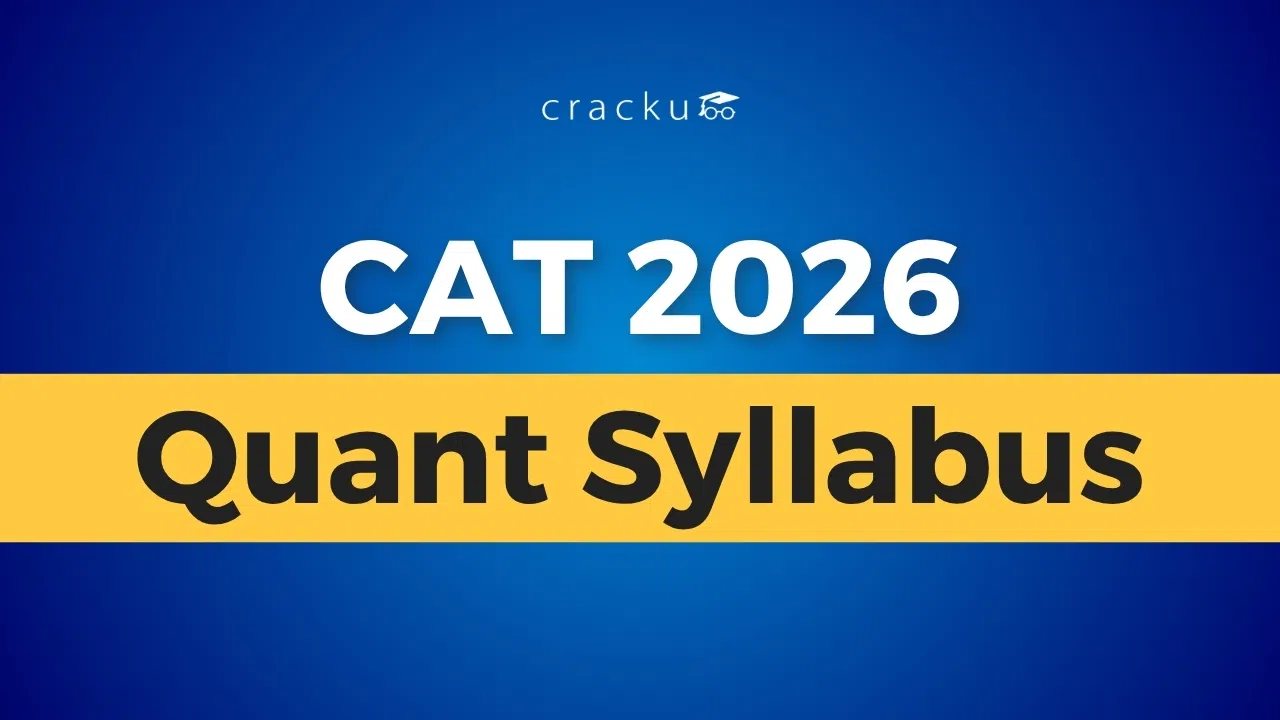



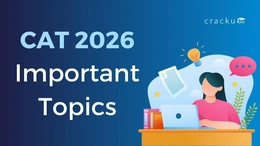
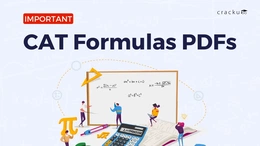
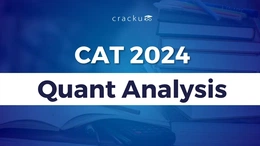
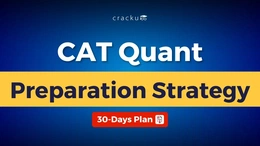
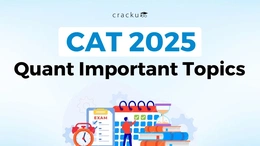
![Top CAT Quant Progressions & Series Questions [Download PDF] Top CAT Quant Progressions & Series Questions [Download PDF]](/media/cache/1e/18/1e1804f8e048fddfc82227c7d80319eb.webp)

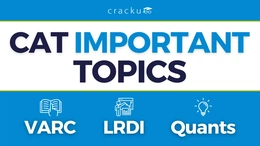
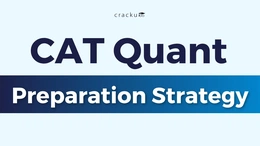
![Top CAT Quant Quadratic Equations Questions [Download PDF] Top CAT Quant Quadratic Equations Questions [Download PDF]](/media/cache/c2/05/c205c0abdf778ffd7663c253d9b95a8a.webp)

![Top CAT Quant Logarithms Questions [Download PDF] Top CAT Quant Logarithms Questions [Download PDF]](/media/cache/a9/43/a9435ad60edf01c1f1e0017c9d6f741d.webp)

![Top CAT Quant Linear Equations Questions [Download PDF] Top CAT Quant Linear Equations Questions [Download PDF]](/media/cache/cb/00/cb00fafca1806baf52b208410d968299.webp)





